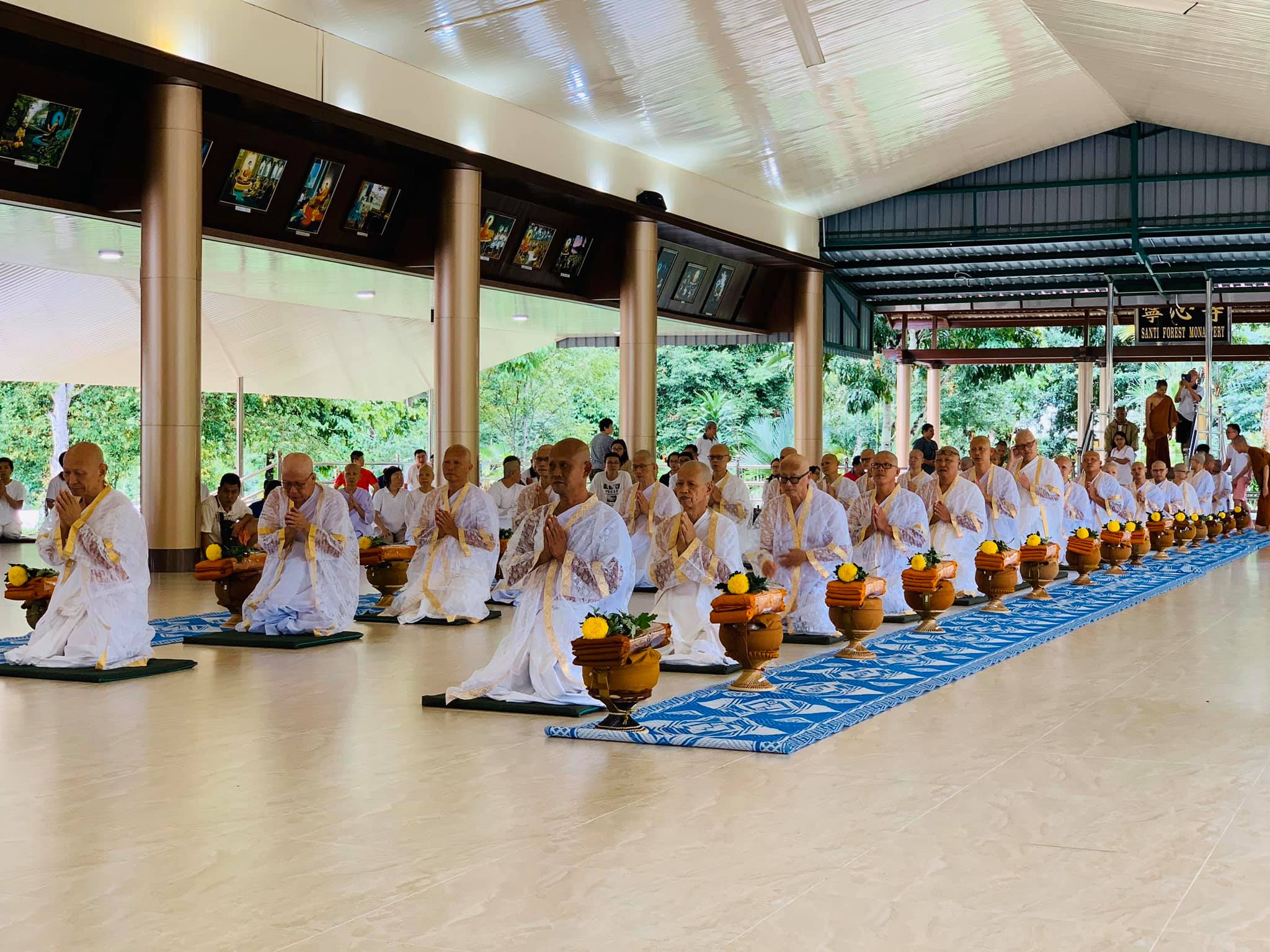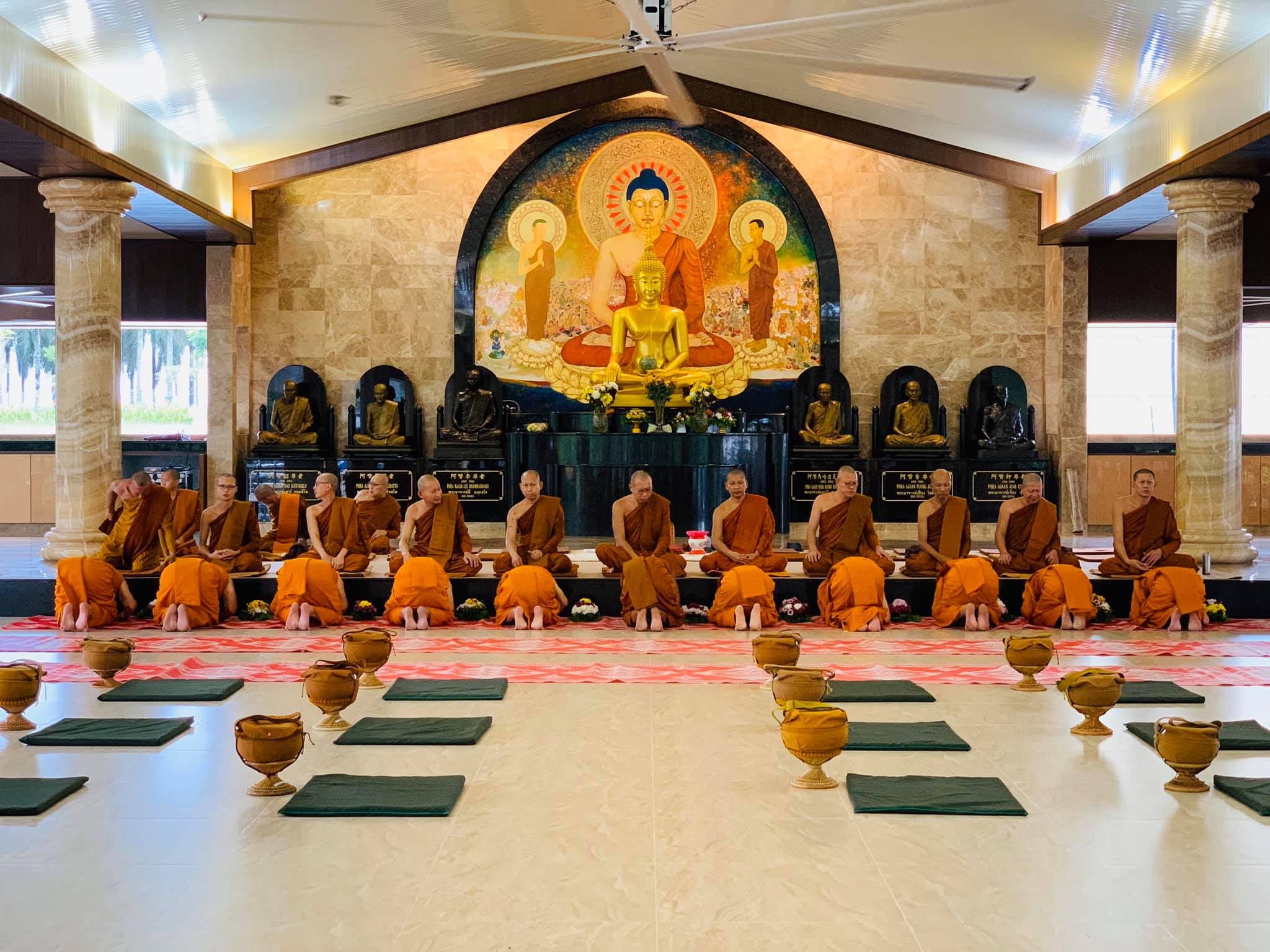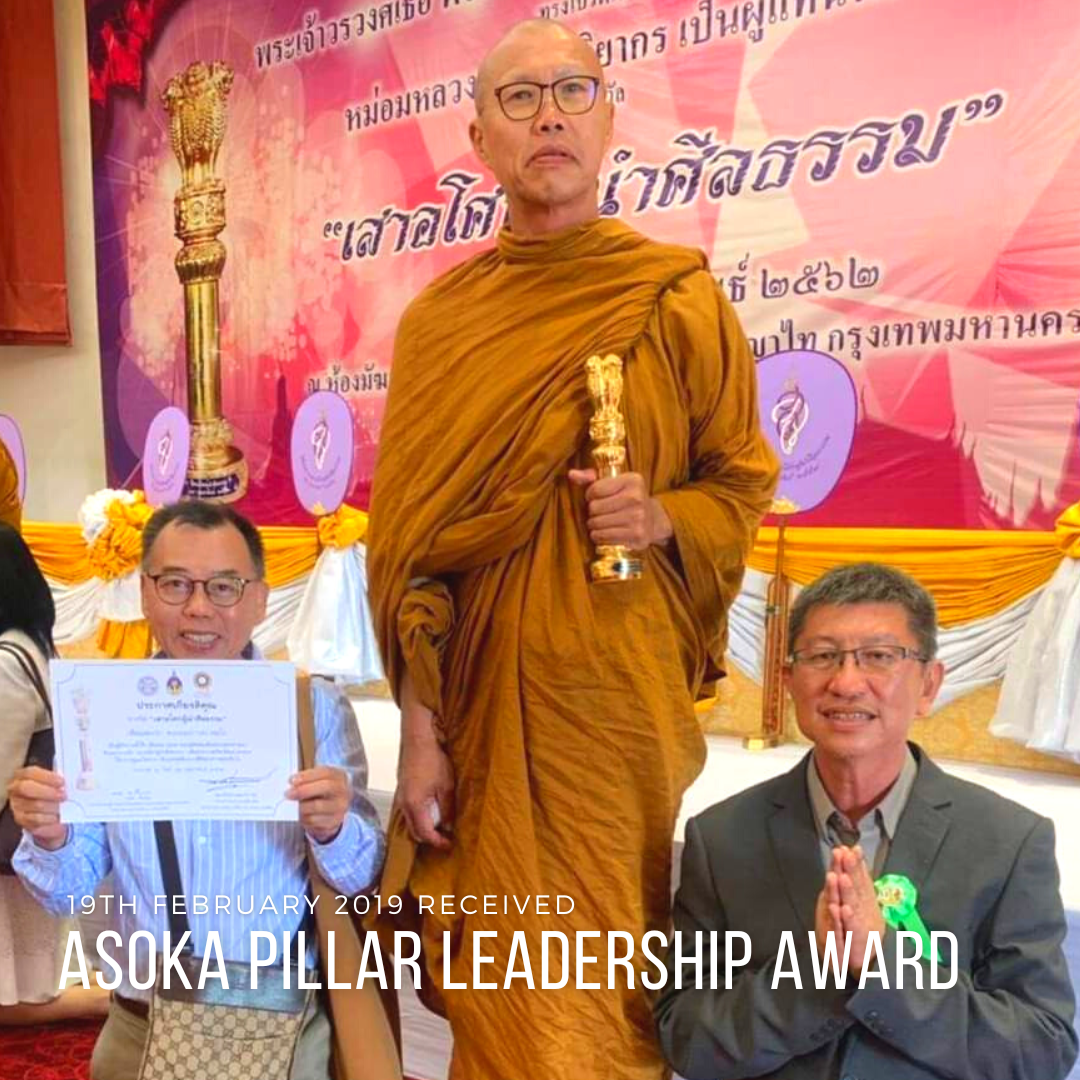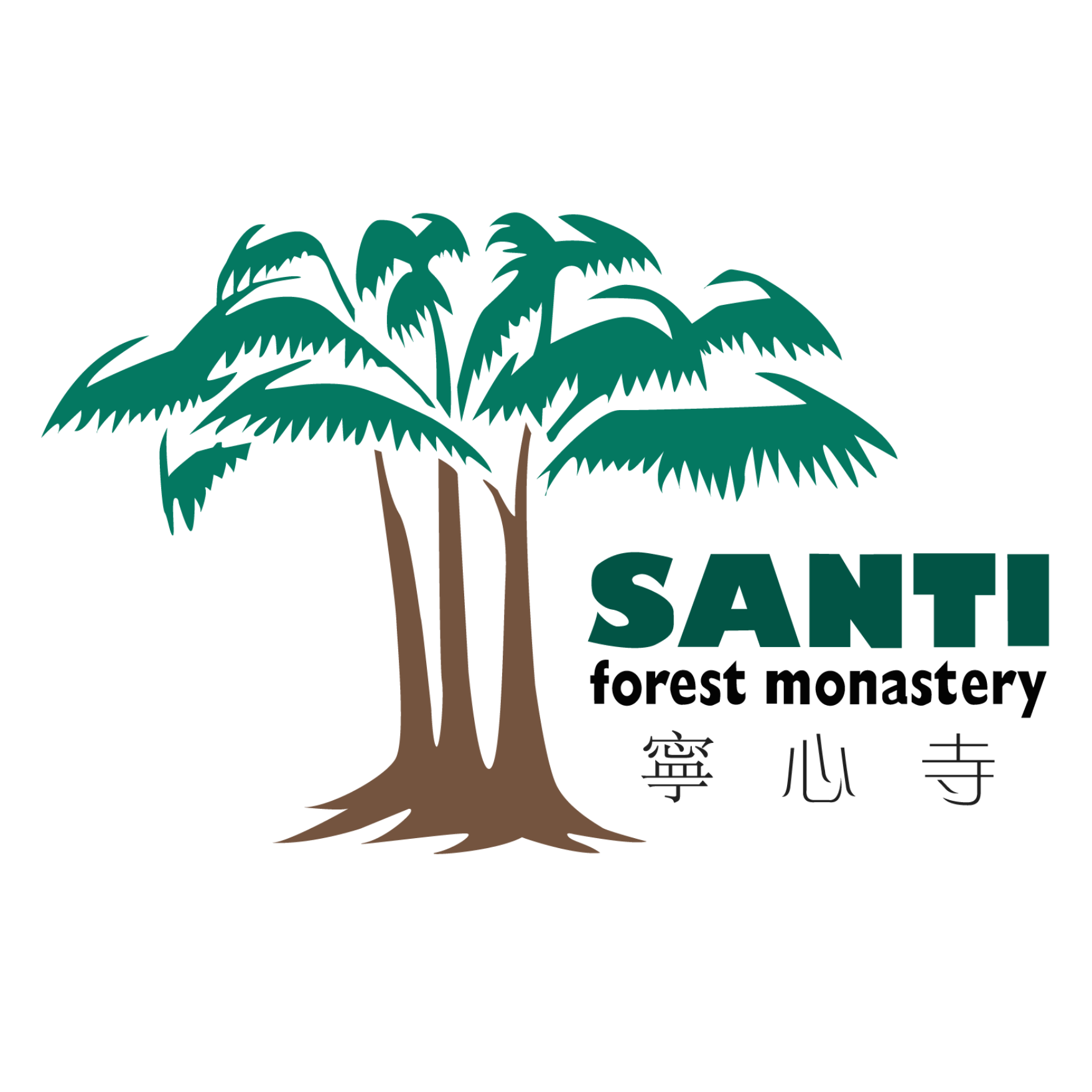The Background
Santi Forest Monastery has a fascinating beginning that bore fruit with the ripening of conditions.
In 1998, after 12 long years of diligent, austere practice in Thailand and USA, Ajaan Keng decided to return to Singapore and Malaysia. His original intention of only looking for a suitable place for meditation somehow developed and further blossomed into the founding of a monastery for the propagation of the Dhamma.
With his initial objective in mind, Ajaan Keng started looking around for a suitable place for meditation. Interestingly, during this period, in his dream, Ajaan Keng had a vision of a Sala Hall filled with monks and many eight preceptors moving around. It was situated on high ground and surrounded by greenery and a lake.
Not long after that, he received news from Bhante Tikkayano (Phra Chuan Yuan) that someone wanted to donate a piece of land for the practice of Buddhism and was looking for a suitable recipient.
The donor, Brother Cha Yok Tek had offered to donate a 4-acre piece of land to several Buddhist organisations but his offer was not taken up for a variety of reasons. Eventually, a very senior monk, Bhikkhu Buddhadhatu, suggested that the piece of land be donated to Ajaan Keng who had then just returned from Thailand and was residing at Dhamma Light Meditation Centre, Api-Api, Pontian. Upon hearing this, a few lay devotees and Ajaan Keng visited the site of this piece of land situated at Sungai Tiram, Ulu Tiram, Johor ( the present site of Santi Forest Monastery).
Upon their arrival, what greeted them was a poorly maintained oil palm plantation surrounded by an expanse of wild vegetation. However, Ajaan Keng was filled with a great sense of happiness and joy because that was exactly the scene he saw in his dream. After a few more visits to the site and upon the proposal of a fellow monk that they spend the Vassa (Rains Retreat) there, Ajaan Keng built a simple shed and stayed there, at that remote place to meditate and practice during that Vassa (and also, many Vassas following that).
The Early Years
Ajaan Keng faced many problems and challenges during the early years. There were no water and electricity supplies. Fortunately, the only Chinese resident there, Brother Ah Meng, let Ajaan Keng use his wash room and other basic facilities. A group of early devotees also started to make daily food offerings to Ajaan Keng and the other members of the Sangha as well as the eight preceptors practising there.
In the vicinity of Santi Forest Monastery are a few Malay villages. The residents there being Muslims, were initially suspicious of Ajaan Keng and tried to chase him away. Fortunately, after observing and knowing that Ajaan Keng and his fellow monks were true practitioners, the compassionate village headman stepped in to stop the villagers from harassing them.
The Development of Facilities and Infrastructure
Meanwhile, more devotees gathered at Santi Forest Monastery to help clear the surroundings of the thick undergrowth.
In the setting up of the monastery, Ajaan Keng also requested for and received help from his fellow brother monks namely Luang Por Ong from Singapore, Ajaan Dum and Ajaan Klom (both from Thailand). In the beginning, with limited funds, they did most of the civil works and carpentry jobs of building kutis, toilets, roads, fencing, etc themselves with some help from the lay devotees. What was amazing was that, many of the jobs were done manually due to the lack of machinery.
Then, a small and simple shed was constructed to be used as a Sala Hall for daily chanting, meditation and dining purposes. Upon further settling down, a proper Sala Hall was constructed and it still stands at the original site after some renovation. Ajaan Keng hopes that this sala hall will be preserved and maintained for remembrance.
Santi Forest Monastery As A Legal Entity
The next step after the construction of the kuti and shrine hall was the registration of Santi Forest Monastery as a legal Buddhist organisation. Ajaan Keng is a Singaporean but one of the requirements for the registration of Santi Forest Monastery with the Registrar of Societies (ROS) is to have a Malaysian head the organisation. At one of the gatherings of the Sangha during the visit of Luang Por Ganha to KL, Malaysia, Ajaan Keng met Bhante Lee, a Malaysian, who was at that time practising at Wat Doi Dhamma Chedi in Thailand. Bhante Lee was then invited to join the group to set up Santi Forest Monastery (now officially known as Pertubuhan Meditasi Harmoni Santi Vanaram) as its Chairman.
Formation of the First Committee
The formation of Santi Forest Monastery was no easy task. The pro tem committee faced a lot of obstacles and challenges and often found themselves in very disheartening situations. Nevertheless, their perseverance paid off when, with the kind assistance of Bhante Jutipanno (Hui Guang Shifu), the registration of the organisation with the ROS got underway. The first committee was formed in the year 2000, with the aim of propagating the Lord Buddha’s teachings and prolonging the Buddha Sasana (Buddha’s dispensation) for the benefit of more devotees. With this legal status established, the community of monks residing at Santi started to go for the daily alms round in the villages and towns surrounding the monastery in the year 2000.
Expansion of Santi Forest Monastery
The monastery, itself an old abandoned oil palm plantation, is flanked by other oil palm plantations which were inhabited by wild boars. This attracted illegal hunters to the area. By this time the number of devotees coming to Santi had grown. Ajaan Keng was worried that the hunting activity might pose a threat to the safety of the devotees, especially the children who might unwittingly wander into the neighbouring plantations and get in the way of the hunters. The committee spoke to the hunters but their concerns fell on deaf ears. So, to ensure the safety of the devotees especially the children, Ajaan Keng and the committee mooted the idea of purchasing the adjacent piece of land to stop the illegal hunting activities, as well as to prepare for the future development of the monastery.
This piece of land in question (measuring 4 acres in size), adjacent to the monastery, was owned by two sisters from Masai, Johor. When the committee approached them and conveyed Ajaan Keng’s intention for purchasing the land, the sisters were supportive of the idea and happily sold the land to Santi Forest Monastery at a reasonable price.
After the acquisition of this piece of land, another shrine hall was built in the year 2003. This was to cater for activities like the morning and evening chanting sessions, meditation sessions, the offering of food (dana) to the venerables and the Kathina ceremony held at the end of the 3-month Rains Retreat. Eventually, as the number of monks and devotees increased, this shrine hall too needed to expand accordingly and it was renovated twice, once in 2012 and again in 2019.
The First Sāmanera Ordination Programme
With the availability of the shrine hall, the committee of Santi Forest Monastery organised its first sāmanera ordination programme at its monastery in the year 2003. After the sāmanerā had undergone training for a period of time, Ajaan Keng arranged for those sāmanerā with strong faith and inclination to go for the Bhikkhu ordination in Thailand. Those who went were Phra Keong (at present residing at Santi Forest Monastery) and Phra Saddha (currently chairman of Dhamma Vijaya, Terengganu).
The First Bhikkhu Ordination
Ajaan Keng’s diligent practice, his loving kindness and compassion inspired many devotees, arousing in them great confidence in the Triple Gem – the Buddha, Dhamma and Sangha. This led to Santi Forest Monastery organising its first Bhikkhu Ordination (Full-Fledged Monkhood) in 2008.

According to the Vinaya rules, the ordination ceremony can only be conducted by a monk qualified to be a preceptor in a consecrated hall ( sima hall ), both of which were lacking in Santi Forest Monastery at that time. So, to fulfil these requirements, a senior Thai monk, Than Chao Kun Phra Thamchediyajan, the present abbot of Wat Phrasee Mahathat, was invited to act as a preceptor and the ordination ceremony was held aboard a “ water sima hall”, a raft on a lake as allowed in the Vinaya rules.
From this Bhikkhu Ordination, many rose to the occasion and stayed on as monks to help in the administration of the monastery and the dissemination of the Dhamma (Teachings of the Buddha). Among them are Phra Peter who is currently the Deputy Chairman of Santi Forest Monastery and Phra CK Goh who is currently residing at Palelai Buddhist Temple in Singapore.
Sima Hall Consecration

Attainment of the 2 Pre-requisites of A Bhikkhu Ordination: A Qualified Preceptor and A Consecrated Sima Hall.
Ajaan Keng continued to make progress too. He successfully passed the examination in Thailand and was conferred the certificate of a qualified preceptor of the Dhammayutta order (Forest tradition) on 9th April, 2015 (2558 BE).
In order to accommodate the increasing number of devotees wishing to participate in the Bhikkhu (Monk) Ordination programme, the shrine hall, built in 2003, was upgraded to fulfil all the requirements of a proper ‘sima’ hall and was consecrated in December, 2012. Invitations were extended to and accepted by many notable and highly respected senior monks from Thailand. The Acting Patriarch of the Dhammayuttika Order, His Serene Somdet Phra Wanarat (formal in-charge of the Dhammayuttika Order of Thailand) represented His Serene Somdet Phra Ariyavongsagatanyan ( the current Supreme Patriarch of the Kingdom of Thailand) in gracing the occasion at the consecration ceremony as the chairperson for the declaration of the official status of the Sima Hall, Other eminent senior monks who participated in the consecration ceremony were Phra Thammavaraphon , Phra Yanawisit ( Luang Pau Thong) and many other senior members of the Sangha. In all, more than 100 members of the Sangha attended, participated in and witnessed the many events held during the ceremony. The presence of so many distinguished and illustrious senior monks on that day created an electrifying, awe-inspiring atmosphere charged with devotion, faith and enthusiasm for everyone present. After that, 100 devotees were ordained in that sima hall.


Since then, Santi Forest Monastery has become the only Thai Buddhist Monastery of the Dhammayuttika Order (Forest Tradition) that has both, a qualified preceptor and an officially consecrated sima hall. Many hundreds (and still counting) of devotees have participated and will participate in the novitiate programmes held and to be held, to ordain monks for either long term or short-term renunciation.
Asoka Pillar

Venerable Chao Khun Keng was nominated to receive the “Asoka Pillar Moral Leadership Award 2019” by the Association of Distinguished Contributor to Buddhism of Thailand, the National Office of Buddhism and the Center for Promotion of Buddhism. This event was held at Royal Thai Army Headquarter, Thailand on 19th Feb 2019.
To commemorate this recognition, Santi Forest Monastery constructed an Asoka Pillar at the entrance of Santi Forest Monastery. The construction of this Asoka Pillar is also to recognise the part played by King Asoka in the propagation of Buddhism.


The Future of Santi
Imbued with such faith and fervour, the spread of The Lord Buddha’s Teachings, the Dhamma, took its natural course. There was no stopping the tide. Santi continues to expand in land size mainly through donations by devotees and presently has about 30 acres of land in this locality, ready for development when the time is ripe. Further to that, Ajaan Keng, initially only a lay devotee of Wat Palelai, Singapore, charged forward with those inspired by him to establish the following monasteries affiliated to Santi Forest Monastery both locally (in the Asian region) and further abroad.
These affiliated monasteries were either established from the ground up or later entrusted to the care and leadership of Ajaan Keng, who continues to serve as their President or Spiritual Advisor.
Palelai Buddhist Temple
Singapore
(Since the inception of Santi Forest Monastery)
Wat Pa Doi Cherontham
Omkoi, Chiang Mai, Thailand
(2005)
Wat Khemago Buddhist Association
Mankarbo, Sweden
(2018)
Wat Samphanthawong Geelong
Lara, Victoria, Australia.
(2021)
Sarasota Forest Monastery
Englewood, Florida, USA.
(2022)
Nepal Forest Monastery
Sainamainaa, Nepal
(2025)

